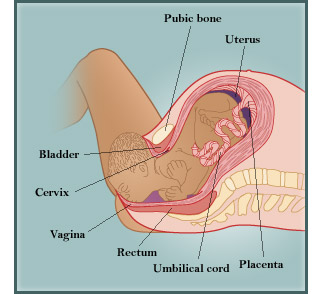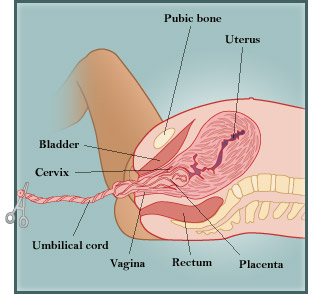We've all seen the apps that lay out pregnancy week-by-week, right? Those are great and we fully support them but sometimes it's nice to see it all laid out in one place. Here in this blog, we are going to give you a brief run-down on pregnancy in its entirety, as well as what to expect for labor and postpartum. The more you know about this process, the more empowered you can feel when making decisions regarding your medical care.
In addition, for any of you readers who are interested in what midwifery care looks like, we will give you a brief idea of how you would interact with your midwife at each stage of the childbearing cycle.
Pregnancy Education, Labor & Delivery, Postpartum, Midwifery

Photo Credit: Adobe Stock
The average pregnancy lasts 40 weeks past the first day of whenever your last menstrual cycle began. Pregnancy is commonly broken down into 3 trimesters, each trimester lasting for 12 full weeks.
What is a Midwife
A midwife is a care provider that supports low-risk individuals throughout their pregnancy, labor, and delivery, and postpartum period in an out-of-hospital setting.
For any individual interested in accessing midwifery care, they can call and talk to their local community birth midwifery and see if they are a good fit for midwifery care and community birth. If so, the first appointment will be scheduled for roughly 8 weeks from the first day of the person's last menstrual period.
1st Trimester | Weeks 4 - 12

Photo Credit: Kindred Bravely
What is happening in the body?
How do midwives help clients at this gestation?
Help clients identify the specifics of their pregnancy (due date, how many babies, etc.)
Identify any risk factors present in their health history
Offer genetics testing and lab work
Nutritional and healthy lifestyle education
2nd Trimester | Weeks 13 - 26

Photo Credit: The StayWell Company
What is happening in the body?
By approximately 18 weeks, all major body systems are present in the fetus and visible by ultrasound
At 20 weeks, the uterus is about as tall as the belly button of the pregnant person
Baby movements can be felt and by the end of this trimester most likely felt by other people
How do midwives help clients at this gestation?
Education and awareness of mental health disorders associated with childbearing
Education on ways to keep the body healthy during this journey (chiropractic, massage, acupuncture, etc)
3rd Trimester | Weeks 27 - 40+

Photo Credit: Rotunda Hospital
What is happening in the body?
Baby is rapidly gaining weight, neurologically developing, and is moving to being head-down in the pelvis
The uterus is preparing for delivery with Braxton Hicks contractions
How do midwives help clients at this gestation?
Help educate on identifying the meaning behind symptoms in their body and how to identify labor
Bloodwork and GBS testing
Assessing fundal height growth and fetal position
Vitals
Labor & Delivery
Photo Credit: Adobe Stock
What is happening in the body?
The body engages the uterus in a routine squeezing motion in order to help the baby move down and out of the uterus and through the vaginal canal.
How do midwives help clients at this gestation?
Assess maternal and fetal well-being throughout the process
Encourage movements and comfort measures to help with the process
Help assist the baby through the vaginal opening
Identify that the process is happening in a typical anatomical way and is safe for both the birther and baby
Postpartum

What is happening in the body?
The body is now adapting to no longer supporting a baby internally and adjusting to supporting a baby externally
The uterus rapidly reduces in size
The body is triggered to begin creating a supply of milk
How do midwives help clients at this gestation?
Frequent check-ins to ensure that the body is properly adapting post-delivery
Mood disorder evaluation
Education around postpartum nutritional needs
Ensuring that clients have access to local resources for the postpartum period
-2_.jpg)




Comentários